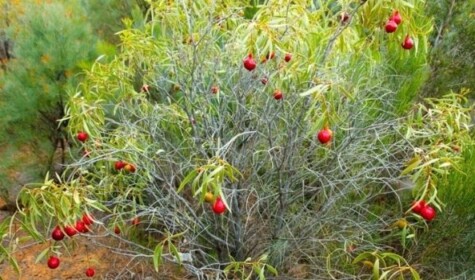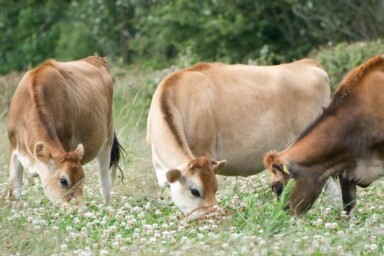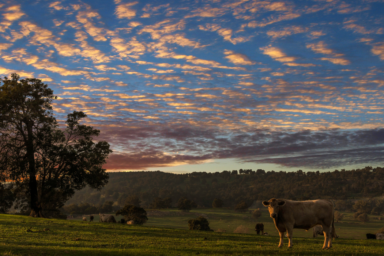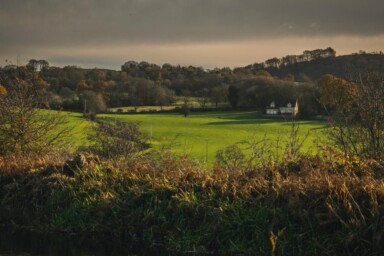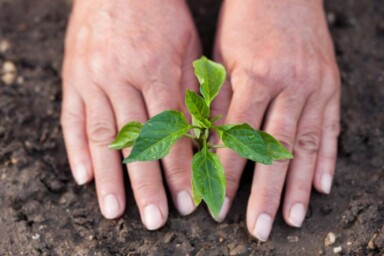The value of eating local sustainable produce has been promoted over the last decade for its benefits – fresher food, better environmental practices, reduced food miles, support of local farmers and economies. This, as in many countries, has manifested itself in Australia through an increase in farmers’ markets, community gardens, local food boxes and restaurants specialising in farm to table cuisine, all of which are positive developments in fostering a better relationship between people and their food. Nevertheless, these issues need to be explored further, examining and questioning what is ‘local’ and ‘sustainable’. In the case of Australia, as a ‘foodie’, cosmopolitan and multicultural society that wholeheartedly embraces ethnic cuisines from around the world, Australians remain surprisingly unaware about what is native and indigenous Australian food.
Most foods consumed in Australia are not native to the continent but were introduced by British settlers or subsequently brought in with later waves of immigration from Europe and Asia. Many of the staples grown, such as wheat, soybean and barley crops, have suffered lower yields following the substantial increase in temperatures as a result of climate change. Yet for more than 50,000 years Aboriginal Australians cultivated and domesticated crops that were native to the continent, and therefore better adapted to its temperature and environmental pressures, providing great abundance, nutrition and diversity of food to Indigenous communities. Why local flora and fauna has not been embraced as a food source, and the knowledge of Aboriginal peoples revered and preserved, very much ties into the country’s history of colonisation. A native Australian food sector has been slow to emerge but is gaining traction and is likely, in the coming years, to rewrite a more authentic local and sustainable food paradigm.
Towards a truer account
Australians’ relationship to native foods and Indigenous foodways, stems from colonisation and the Anglo-centric attitudes which characterised Aboriginal Australians as primitive. Aboriginal Australians were labelled hunter-gatherers by British settlers, who did not recognize the value of Aboriginal culture and Aborigines’ relationship to the land and their agricultural practices, which the settlers sought to eradicate in favour of European ones. The legacy of colonisation and its dismissal of Aboriginal Australians was devastating in the loss of life and culture, dispossession of native lands and foodways, as well as disease. Similarily, the colonial viewpoint has informed much of Australia’s knowledge of and perspective on Aboriginal Australia, with a legacy of ignorance perpetuating a lack of interest in native foods and Indigenous foodways.
This Anglo-centric narrative, however, has recently been challenged by two prominent authors, revealing that Aboriginal Australians were far from the primitive hunter-gatherers which the British settlers depicted them as. Historian and Emeritus Professor at the Australian National University, Bill Gammage, in his book The Biggest Estate on Earth – How Aborigines Made Australia, dispels the notion that Aboriginal Australians were ”wandering savages”. Visual and written records demonstrate that Aboriginal Australians had developed and implemented complicated land management practices which gave them access to an abundance of food and shelter, as well as maintaining the health of the environment and the biodiversity of flora and fauna. Gammage explains the importance of fire within Aboriginal land management and how this technique should be reintroduced into modern land management practices, as controlled burning encourages growth of native grasses, reduces excessive flammable scrub, minimising the intensity of bushfires, and supports biodiversity. Indigenous author and professor, Bruce Pascoe, Jumbunna Institute for Indigenous Education and Research at University of Technology Sydney, in his book Dark Emu, Black Seeds: Agriculture or Accident goes on to successfully dismiss the colonial myth of the Aborigines as hunter-gatherers and, drawing on the diaries of explorers, presents a more accurate portrayal of Aboriginal Australians as agriculturalists extensively involved with food production and land management systems, including domesticating plants, sowing, harvesting, irrigating and storing crops, and implementing aquaculture and other farming practices. These two seminal works have introduced a new and timely conversation in Australia that rewrites the hunter-gatherer myth and forces recognition of Aboriginal Australians’ extraordinary sustainable land and resource management practices. Furthermore, it has sparked a wider interest in native Australian foods: what they are and why they are beneficial to both environment and health.
Environmentally local and sustainable
Given the current environmental crisis that is felt acutely in Australia through increased droughts, bush fires, severe loss of biodiversity, the poor state of Australian soils and climate change, farming and land management practices that are more regenerative and environmentally harmonious are being sought. The environmental benefits of cultivating Australian native plants over imported varietals that require heavy irrigation and lead to soil salinity and loss of habitat, couldn’t be more compelling. As Bruce Pascoe puts it “Aboriginal domesticates do not require any more moisture than the Australian climate provides, no more fertiliser than our soils already contain and, as they are adapted to Australian pests, they need no pesticides.” These perennial plants are adapted to Australia’s dry conditions and, consequently, better able to deal with the environmental stresses of the future. They also create habitat and are therefore, by definition, the best local and sustainable choice. Aboriginal staples pre-colonisation such as the Murnong yam daisy, which is a tuber, needs very little water and is a great alternative to the common potato with a slight coconut flavour. Similarly, Pascoe argues, Australians should be consuming more native fauna like kangaroo and wallaby that was also once an Aboriginal food, instead of hoofed animals such as sheep and cattle which were introduced by settlers. Australian fauna is adapted to the environment, puts less pressure on water supplies, does not compact the soil, and by cultivating genetic diversity – which has been greatly reduced in our food system – increases resilience. Eating locally and sustainably in Australia needs to take into account native fauna and flora that can support Australia’s unique and varied ecosystems without placing further pressure on finite resources; ‘local food’ must be integrally linked to indigenous species and varietals.
Native superfoods
On top of the environmental benefits of cultivating Australian foods, they are also a powerhouse of nutrition, high in antioxidants, vitamins and minerals. Author John Newtown, in his book The Oldest Foods on Earth: A History of Australian Native Foods, explains that it is due to Australia’s varied climatic zones, with low and unpredictable rainfall, stressing these plants, and the fact they are wild varietals, that results in their nutritional density. One example is the Quandong, commonly known as a ‘wild peach’; it is often referred to as an Australian ‘superfood’. A versatile plant that has traditionally been a part of an Indigenous diet, the Quandong is used as both food and medicine. It has twice as much vitamin C as an orange and is a good source of vitamins and minerals. It is high in antioxidants and contains higher levels of folate, magnesium, iron and calcium than blueberries. There also exists good native Australian substitutes for common European varietals. These include the Warrigal green, similar to spinach, the Illawarra plum, river mint and indigenous varietals of thyme and ginger. Australia also has its very own native rices which are highly nutritious due to their genetic diversity and grow abundantly in Australia’s monsoons. Rice was a staple crop that was harvested for thousands of years by Indigenous peoples. However, much knowledge has been lost in relation to its preparation, and modern milling practices are not effective in removing all of the husk, leaving some grains damaged. While the nutritional value of many native foods is understood, there is still much more research to be done on Australian flora and fauna.
Extending knowledge
There is growing recognition of the value of Australia’s native produce and a need to capture what knowledge there still is of Indigenous land management practices and the cultivation and preparation of many of these foods, before it disappears entirely. Alongside this, is a desire to make these foods more widely available and this has prompted various initiatives and projects which seek to capture and document this important ancient knowledge. Bruce Pascoe set up Gurandgi Munjie, a farming project focused on growing traditional indigenous crops such as kangaroo grass in order to mill it for flour and make bread, demonstrating that Indigenous Australians were the first bakers. Such projects help recover Aboriginal cultural knowledge and its traditional foods.
The Orana Foundation, headed by Chef Jock Zonfrillo of the restaurant Orana, was set up in order to “assist Indigenous communities by stimulating…enterprise”. Zonfrillo, who is at the forefront of redefining Australian cuisine with native Australian foods, wanted to give back to the communities he had learnt from. The organisation has been involved in various projects, including setting up an Indigenous food database and doing plant production assessments. It is aiming to set up commercial enterprises in the hands of Aboriginal people, working with these native foods.
The Australian Native and Food Botanical (ANFAB) was set up ten years ago as the primary national body responsible for overseeing the sustainable development of the native food industry. At the heart of these initiatives is the recognition that not only is it important to protect and maintain Indigenous knowledge, but in the process celebrate and engage with its culture. It is imperative that the Australian native food industry expands with due recognition and Aboriginal participation, but most importantly, ownership by Aboriginal Australians. Currently the industry is estimated to be worth nearly £8 million, however with the domestic and international export potential yet to be realized, it is expected to grow.
The success of the industry’s growth – which must have lasting impacts that go beyond culinary trends – will be certain if Indigenous land and resource management techniques are integrated with current ones, and Aboriginal Australians are recognized for their historically sustainable cultivation of the land. This can only happen if Aboriginal Australians are at the forefront of the industry and are given both governmental support and more access to land. Simultaneously Australian consumers should be educated not only in the culinary uses of various native foods, but in their cultural significance, recognising Australia’s true local sustainable foods.
